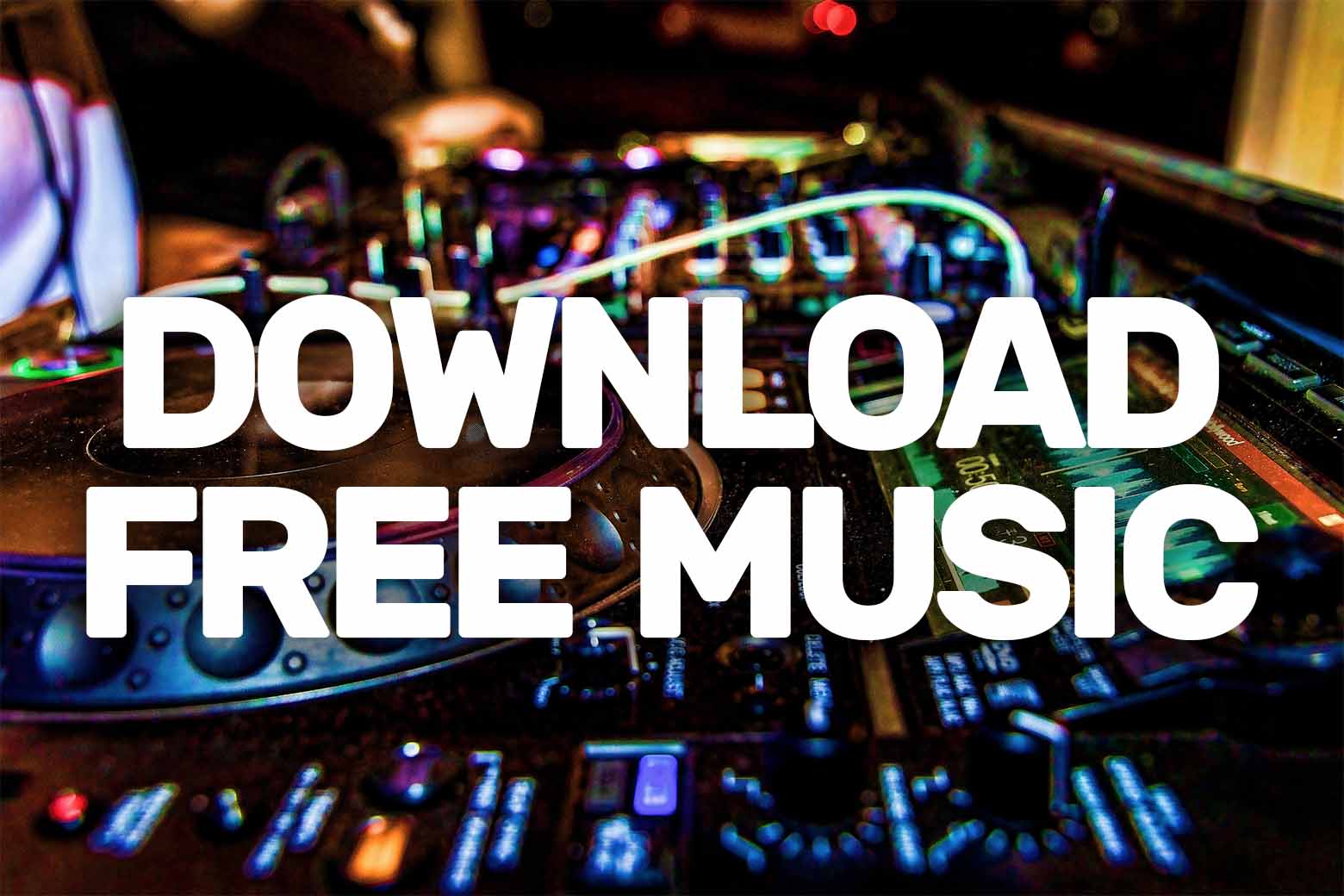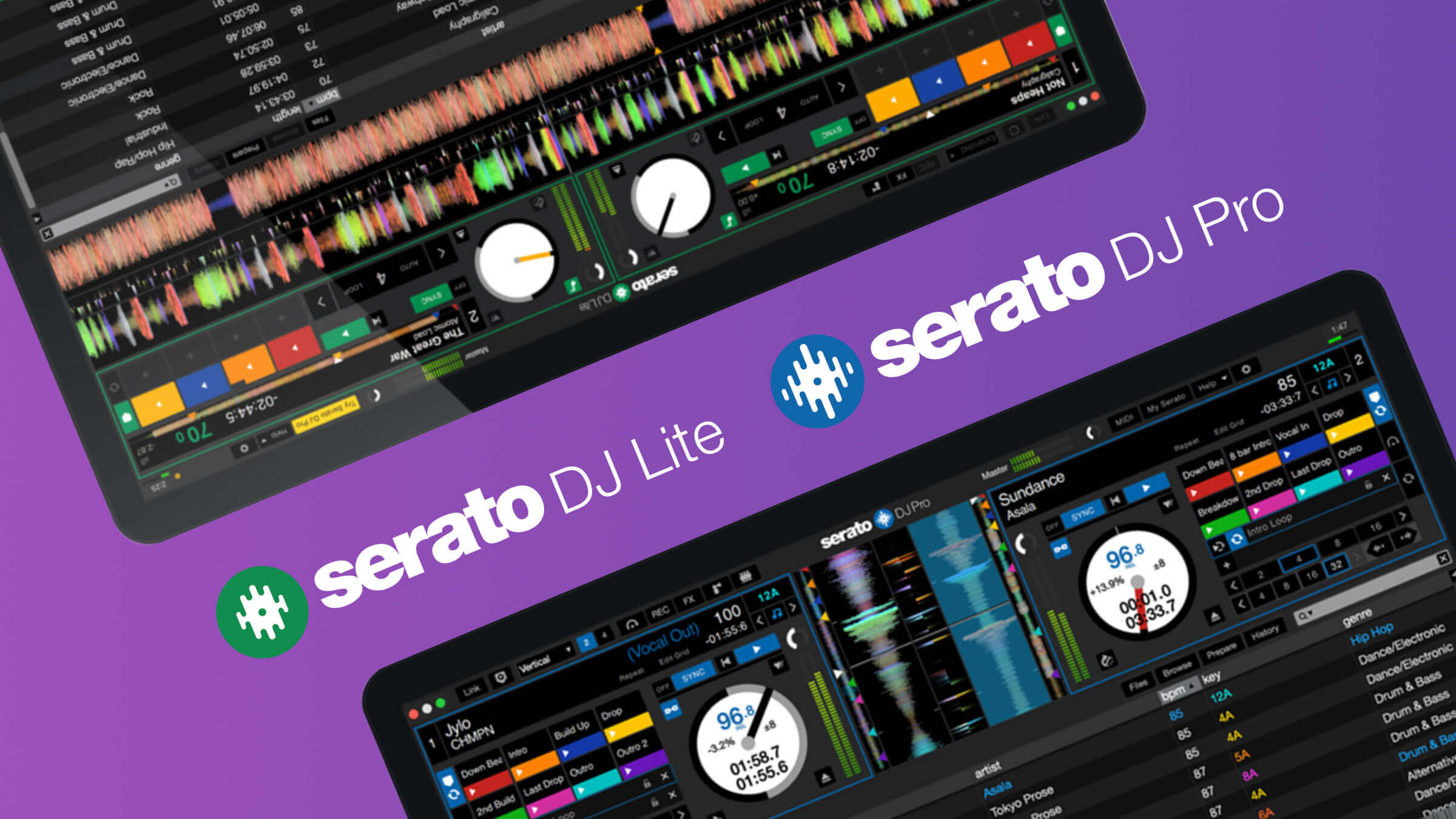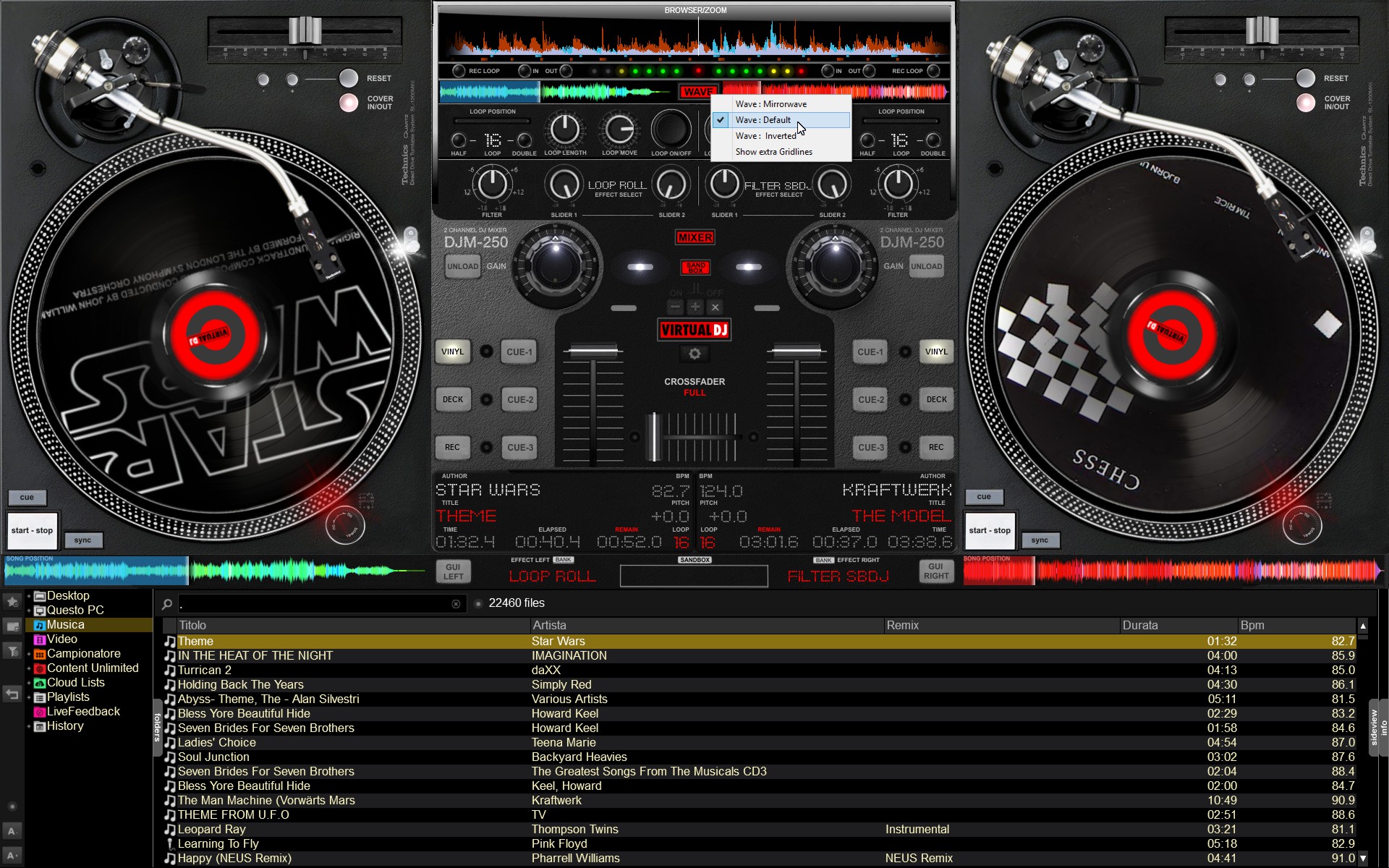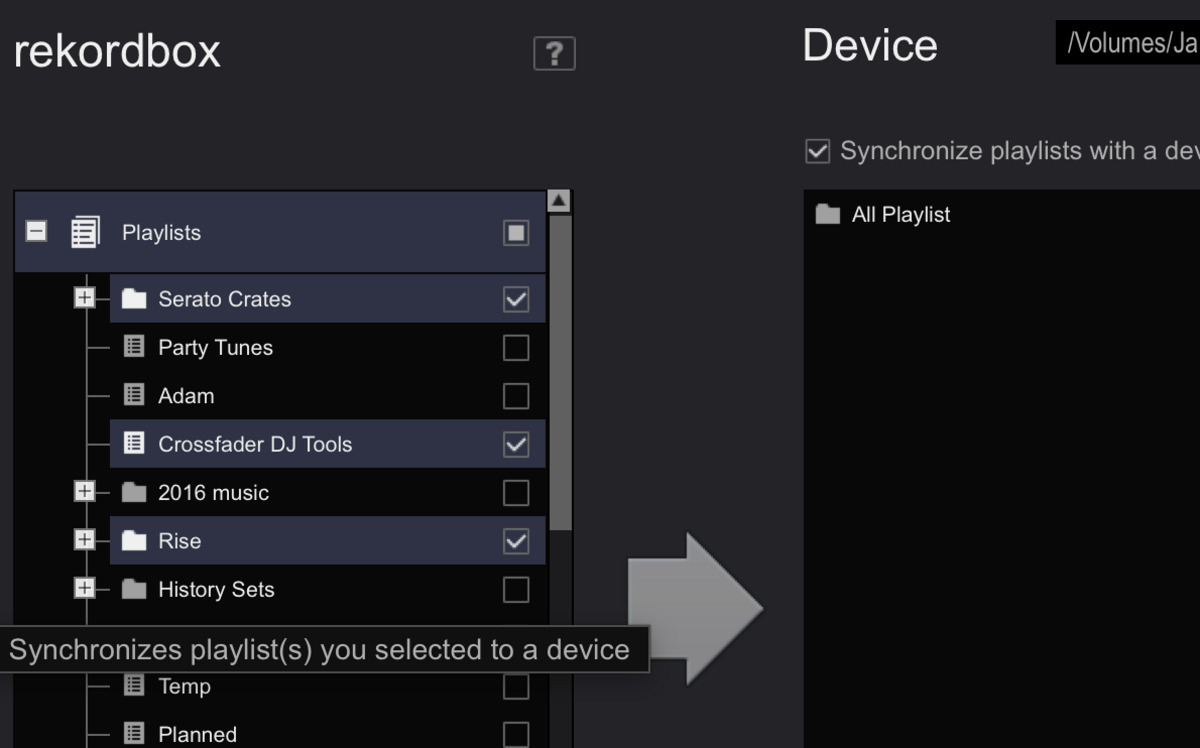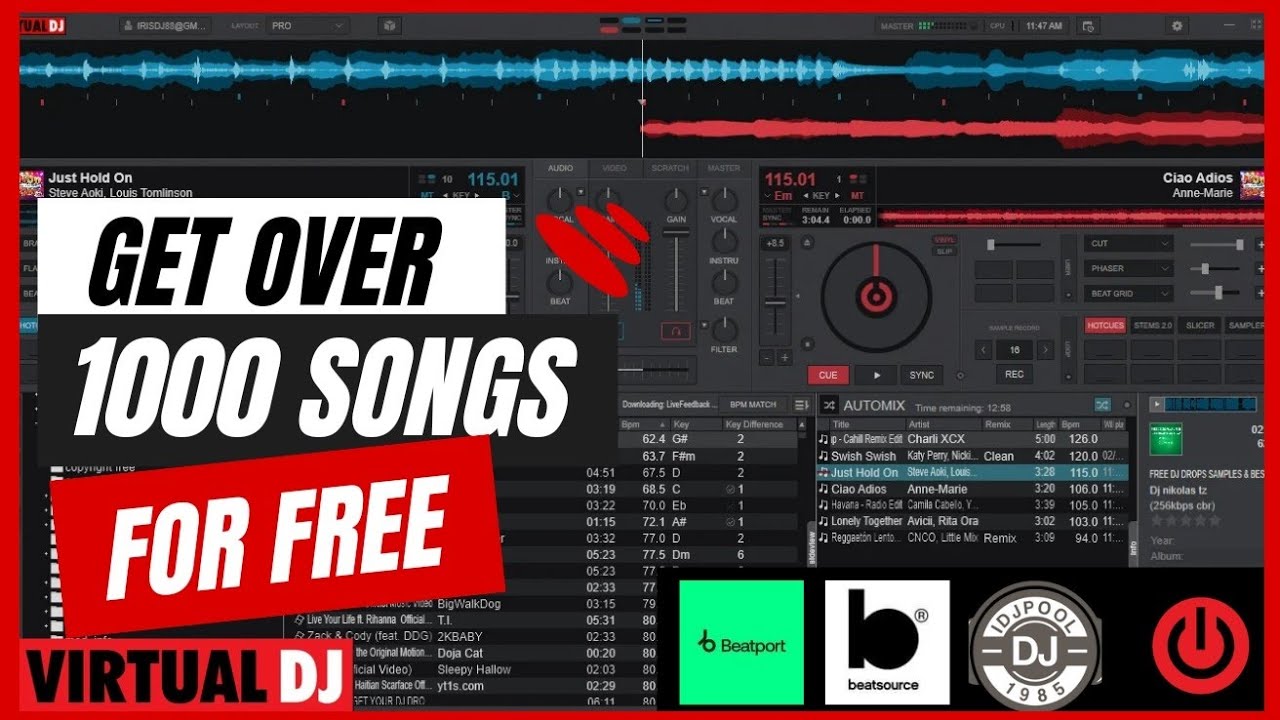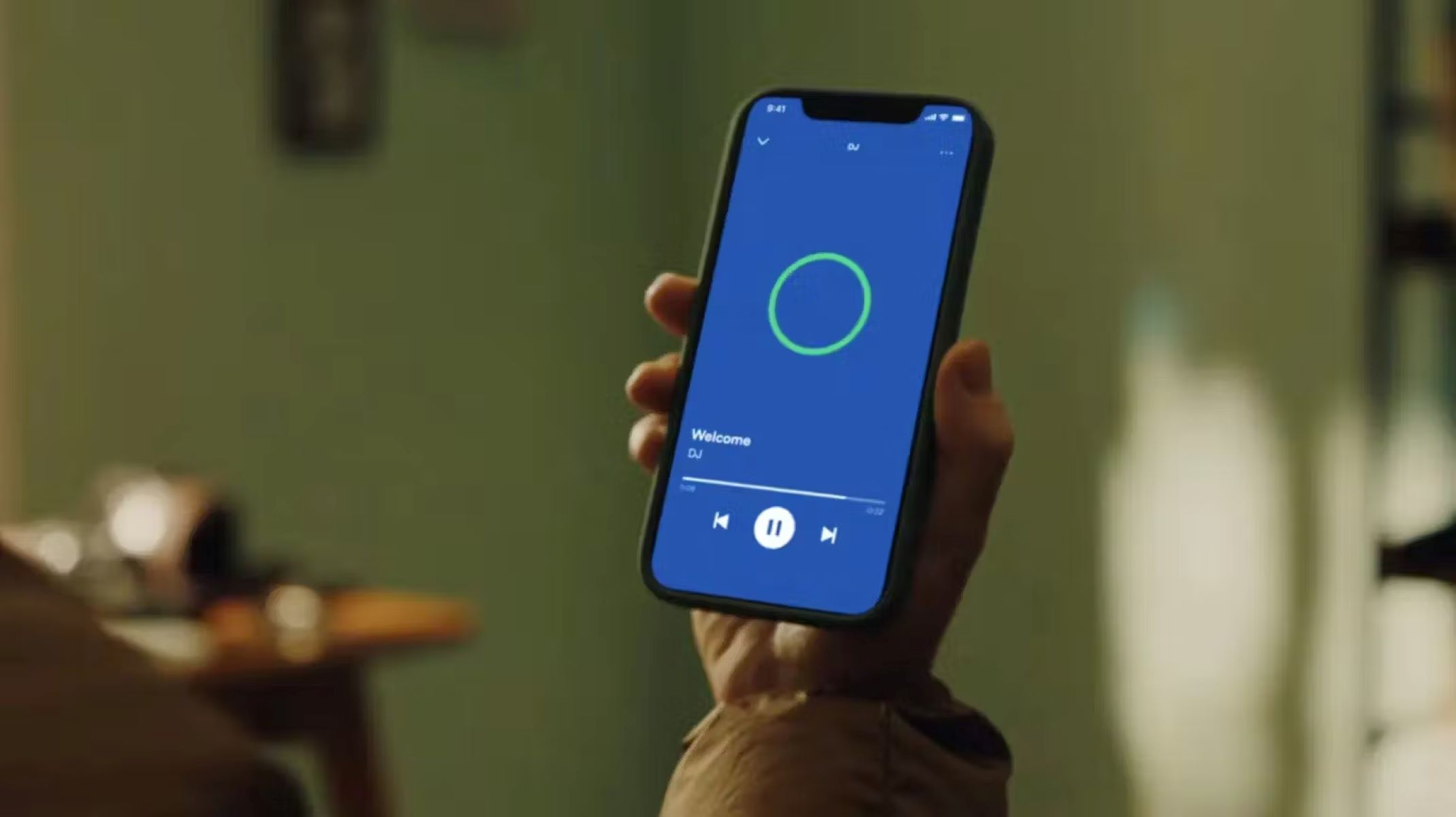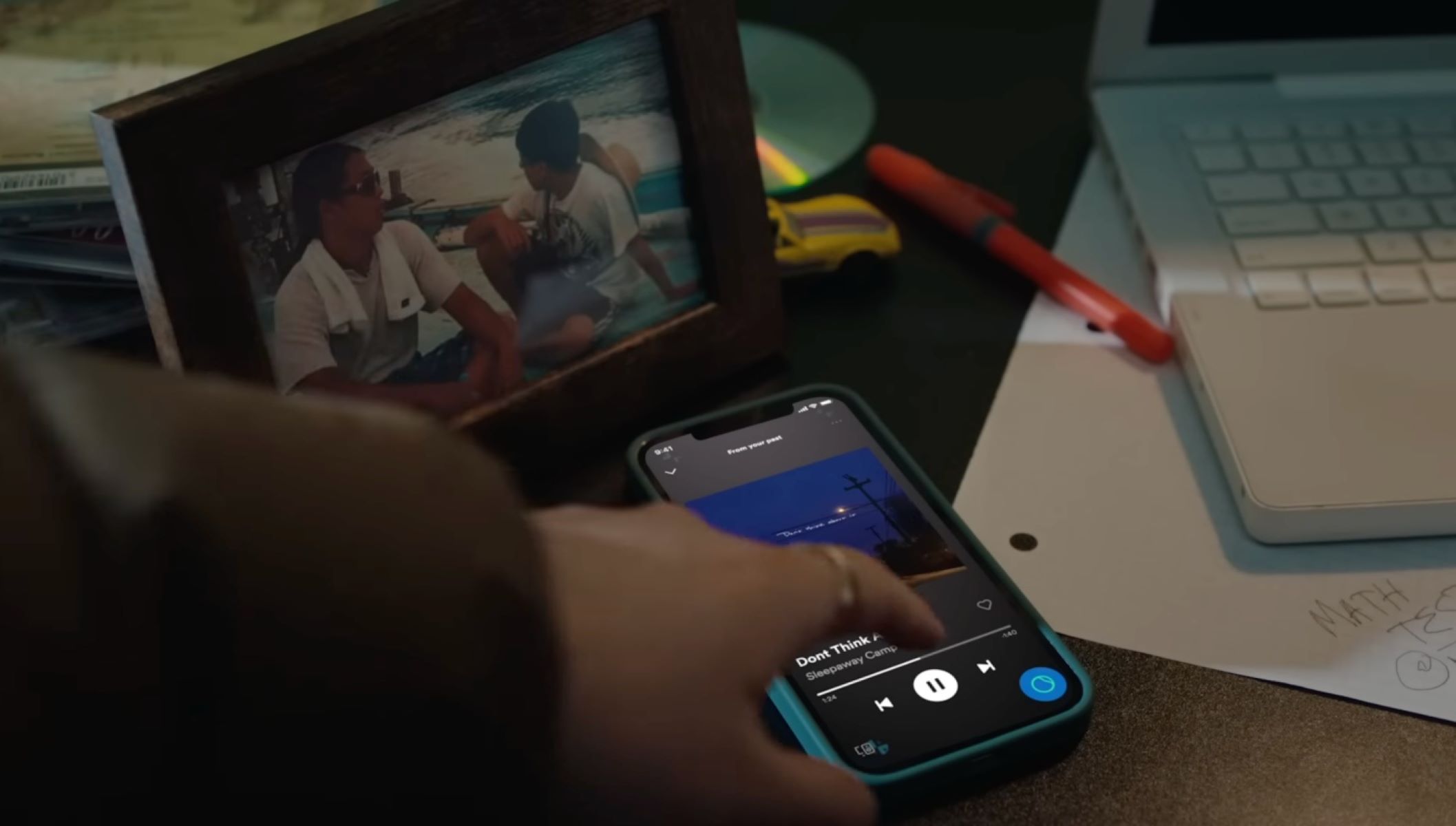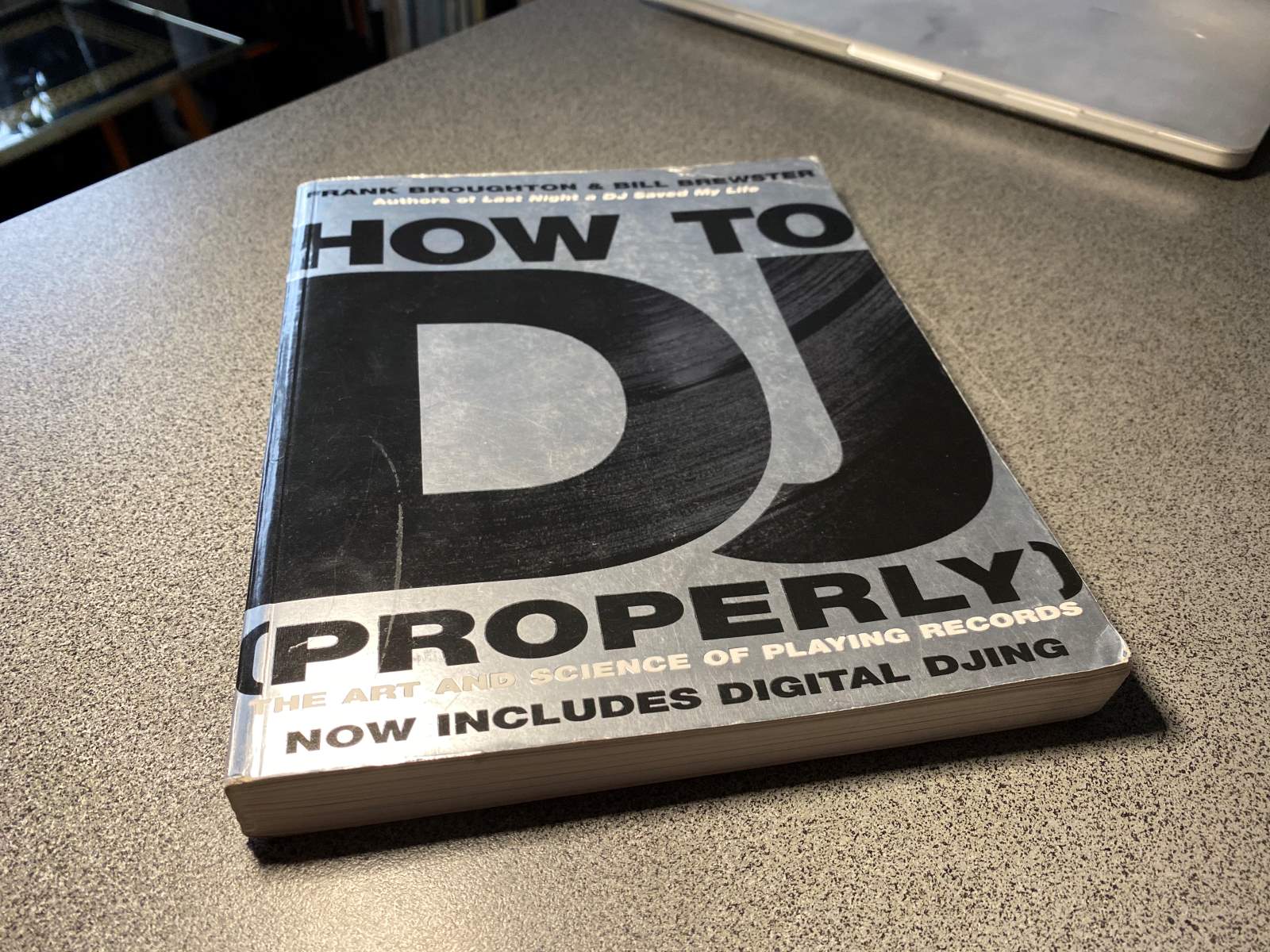Introduction
Welcome to the world of DJing! As a DJ, the music you play is the heartbeat of your performance. It sets the mood, creates the energy, and keeps the crowd dancing all night long. To ensure you have access to the best tracks for your sets, it is crucial to know how to download music specifically for DJing purposes.
Downloading music for DJing involves more than just finding songs online and hitting the download button. It requires a strategic approach to build a diverse and high-quality music library that caters to your unique style and the preferences of your audience.
In this article, we will guide you through the process of downloading music for DJing and share essential tips to help you create an impressive collection of tracks. From finding the right sources to organizing and backing up your music, this guide will equip you with the knowledge and tools you need to elevate your DJing game.
Whether you’re a seasoned DJ looking to expand your music selection or a beginner just starting your DJ journey, this article will provide valuable insights that will enhance your DJ sets and take them to the next level.
So, let’s dive in and explore the world of downloading music for DJs!
Finding the Right Music
When it comes to DJing, having access to a wide variety of music is essential. It allows you to cater to different tastes, genres, and moods. However, finding the right music can be a daunting task, especially with the vast amount of content available online. Here are some tips to help you find the perfect tracks for your DJ sets:
- Know Your Style: Before you start searching for music, it’s important to have a clear understanding of your DJing style. Are you into house, techno, hip-hop, or a combination of genres? Knowing your style will help you narrow down your search and focus on finding tracks that resonate with your preferred sound.
- Visit DJ-Focused Websites: Many websites are specifically designed for DJs and offer a wide selection of music for download. Explore platforms like Beatport, Traxsource, and Juno Download, which provide extensive collections of electronic music across various genres.
- Follow Record Labels and Artists: Keeping up with your favorite record labels and artists is a great way to discover new tracks. Follow them on social media, subscribe to their mailing lists, and explore their websites, as they often release exclusive content and provide download links for DJs.
- Utilize DJ Pools: DJ pools are subscription-based services that offer a curated selection of music for DJs. They provide access to new releases, remixes, and exclusive tracks from a variety of genres. Some popular DJ pools include DJcity, BPMSupreme, and Club Killers.
- Explore Streaming Platforms: Streaming platforms like SoundCloud and Mixcloud allow you to discover new music and explore DJ mixes from artists around the world. While you can’t download tracks directly from these platforms, you can use them as a source of inspiration to find the music you want to add to your collection.
Remember, finding the right music is an ongoing process, and it’s essential to keep exploring, discovering, and adding new tracks to your library. With a diverse selection of music, you’ll have the flexibility to adapt to different venues, events, and crowds, ensuring an unforgettable DJing experience.
Choosing the Right Download Source
Once you have narrowed down your search for the perfect tracks, the next step is to choose the right download source. There are various options available, each with its own pros and cons. Here are a few factors to consider when selecting a download source:
- Quality and Format: It’s crucial to ensure that the download source offers high-quality audio files. Look for sources that provide tracks in lossless formats like WAV or FLAC, as they maintain the original audio quality. Additionally, some sources may offer compressed formats like MP3, which are smaller in size but may compromise on audio fidelity.
- Legitimacy and Licensing: It’s important to use legitimate download sources that respect copyright laws and have the necessary licensing agreements with artists and record labels. This ensures that you are supporting the artists and obtaining music legally.
- Community Recommendations: Seek recommendations from other DJs or music enthusiasts who have experience with different download sources. Online forums, DJ communities, and social media groups can be valuable resources for finding reliable and reputable sources.
- User-Friendly Interface: Look for sources that offer a user-friendly interface and allow easy navigation and searching. A well-designed platform can save you time and make the process of finding and downloading tracks more efficient.
- Price and Payment Options: Consider the pricing structure and payment options offered by the download source. Some sources may require a monthly subscription fee, while others may offer a pay-per-download model. Assess your budget and choose a source that aligns with your financial needs.
Ultimately, the right download source for you will depend on your personal preferences, budget, and the specific tracks you are looking to add to your DJ library. Take your time to explore different sources, read reviews, and compare their offerings before making a decision.
Remember, the quality and legitimacy of the download source are key factors that should not be compromised. By choosing a reliable and reputable source, you can ensure that you have access to high-quality tracks that will enhance your DJ sets and delight your audience.
File Formats for DJing
When it comes to DJing, the file format of your music is an important consideration. Different file formats have varying levels of audio quality, compatibility with DJ software, and storage requirements. Here are some common file formats used in DJing:
- WAV: WAV files are uncompressed audio files that offer the highest audio quality. They contain the original, full-quality audio data and are ideal for DJs who prioritize pristine sound reproduction. However, WAV files can be large in size and may consume more storage space.
- FLAC: FLAC (Free Lossless Audio Codec) is another lossless audio file format that provides high-quality audio while offering compression to reduce file size. FLAC files are a popular choice among DJs due to their smaller size compared to WAV files without compromising on audio fidelity. However, not all DJ software and hardware support FLAC files.
- MP3: MP3 is a commonly used compressed audio file format that allows for smaller file sizes without significant loss in audio quality. It is widely supported by DJ software, controllers, and media players. However, due to its compression, MP3 files may have slightly reduced audio fidelity compared to lossless formats like WAV and FLAC.
- AAC: AAC (Advanced Audio Coding) is another compressed audio file format known for offering better sound quality at lower bit rates compared to MP3. It is commonly used for streaming services and portable devices but may not be as widely supported by DJ software and hardware.
- AIFF: AIFF (Audio Interchange File Format) is an uncompressed audio file format primarily used on Apple systems. Similar to WAV, AIFF files provide high-quality audio but may result in larger file sizes.
When choosing a file format for your DJ library, consider factors such as the storage capacity of your drive, compatibility with your DJ software and hardware, and your preference for audio quality. It’s essential to strike a balance between file size and audio fidelity to ensure smooth performance and optimal sound reproduction during your DJ sets.
Additionally, it’s recommended to have your music library in multiple formats to accommodate different needs. For instance, you may have lossless formats like WAV or FLAC for your main DJ sets, while keeping a selection of compressed formats like MP3 or AAC for portable devices and situations with limited storage.
By understanding the various file formats available for DJing and their strengths and limitations, you can build a well-rounded music library that suits your DJing style and technical requirements.
Transferring Music to Your DJ Software
Once you have downloaded the music files in the appropriate formats, the next step is to transfer them to your DJ software. The process may vary depending on the specific DJ software you are using, but here are some general steps to guide you:
- Create a Dedicated Folder: Before transferring your music, create a dedicated folder on your computer or external hard drive specifically for your DJ library. This will help keep your files organized and make it easier to locate tracks within your software.
- Import the Music: Open your DJ software and locate the option to import or add music. The specific location and method for importing may vary depending on the software. You can usually drag and drop files from your dedicated folder into the software’s library, or use the import function to browse and select the desired files.
- Analyze the Tracks: Once the music is imported, the DJ software may analyze the tracks to obtain information such as BPM (beats per minute), key, and waveform data. This information is crucial for features like beatmatching, harmonic mixing, and visual representation of the tracks. Allow the software to complete the analysis before proceeding.
- Organize Your Library: Take the time to organize your music library within the DJ software. Create folders or playlists based on genres, moods, or specific events to help you locate tracks quickly during your performances. Use tags, labels, or rating systems provided by the software to further categorize and sort your tracks.
- Back Up Your Library: It is essential to regularly back up your music library to avoid any unfortunate loss of files. Create copies of your DJ library on external hard drives, cloud storage, or other backup solutions. This ensures that even if your computer crashes or experiences hardware failure, you won’t lose your entire music collection.
Remember to consult the user manual or help resources of your specific DJ software for detailed instructions on transferring and managing your music library. The software manufacturer may provide specific guidelines or additional features that can enhance your workflow and organization.
By following these steps and adopting a consistent approach to transferring and organizing your music, you will have a well-organized and easily accessible DJ library within your DJ software, empowering you to deliver seamless and captivating performances.
Organizing Your Music Library
Organizing your music library is a crucial step in ensuring a smooth DJing experience. An organized library allows you to quickly find and select tracks during your performances, saving you time and enhancing your creative flow. Here are some tips to help you effectively organize your music library:
- Create a Structure: Develop a folder structure within your DJ software or file explorer that suits your needs. Consider organizing your music by genres, sub-genres, artists, or labels. It’s essential to have a logical and consistent structure that makes sense to you and allows for easy navigation.
- Use Metadata: Leverage the power of metadata to enhance the organization and searchability of your tracks. Ensure that each track is properly tagged with relevant information such as artist name, track title, album, and genre. DJ software often allows you to edit and add metadata to your tracks, making it easier to sort and locate them.
- Add Comments or Notes: Consider adding comments or notes to your tracks to include information like energy level, audience reactions, or mixing tips. These additional notations can provide valuable insights during your performances and help you create memorable DJ sets.
- Utilize Playlists: Playlists are an excellent tool for organizing your tracks for specific events, moods, or setlists. Create playlists based on different genres, occasions, or popular tracks to have quick access to the right music for any situation. Regularly update and maintain your playlists to ensure they stay relevant and aligned with your evolving DJing requirements.
- Apply Colors or Ratings: Many DJ software platforms offer the ability to assign colors or ratings to your tracks. Utilize these features to further categorize and differentiate your music. For example, you may assign colors to represent energy levels or use ratings to indicate the crowd’s response to specific tracks.
- Delete Unnecessary Files: Regularly review and delete any duplicate or low-quality tracks from your library to keep it streamlined. Removing unused files frees up space and helps ensure that your music collection remains focused on high-quality tracks that align with your DJing style.
Organizing your music library is an ongoing process. It’s important to dedicate time regularly to maintain and update your library as you acquire new tracks. The more effort you put into organizing your library, the more seamless and efficient your DJing experience will be.
Remember, an organized music library not only helps you find tracks quickly but also provides a solid foundation for creative mixing, seamless transitions, and a memorable performance.
Tagging and Sorting Your Tracks
Tagging and sorting your tracks is a crucial step in creating a well-organized and efficient music library for DJing. Properly tagging and sorting your tracks allows for quick and precise searchability, making it easier to find the right tracks at the right time during your performances. Here are some tips to help you effectively tag and sort your tracks:
- Use Consistent Naming Conventions: Establish a consistent naming convention for your tracks. Include relevant information such as the artist name, track title, remix version, and any other distinguishing features. Consistency in naming will help you easily locate and identify tracks within your library.
- Add Genre Tags: Assign genre tags to your tracks to categorize them based on their musical style. Use broad genres like house, techno, hip-hop, or more specific sub-genres like deep house, tech-house, or trap. Consistent genre tagging will make it effortless to create playlists or find tracks for specific genres.
- Include Key Information: Tagging your tracks with key information such as the musical key or key notation (e.g., A minor, G# major) can greatly assist in harmonic mixing. This allows you to seamlessly mix tracks that are in compatible keys for smooth transitions and harmonic coherence in your DJ sets.
- Utilize BPM (Beats Per Minute) Tags: Add BPM tags to your tracks to identify their tempo. This information is beneficial for beatmatching and constructing a well-paced DJ set. Some DJ software can automatically detect the BPM, but it’s essential to double-check and manually tag any tracks that may not have accurate BPM data.
- Make Use of Comments or Notes: Take advantage of the comments or notes field provided by your DJ software to add any additional information about your tracks. This can include personal observations, specific mixing cues, track structure details, or crowd reactions. These notes can serve as valuable references during your performances.
- Create Smart Playlists: Many DJ software platforms offer smart playlist features that allow you to create dynamic playlists based on specific criteria. Utilize this feature to automatically generate playlists based on parameters like genre, BPM range, play count, or rating. Smart playlists can save you time and keep your library organized as new tracks are added.
Investing time in properly tagging and sorting your tracks will pay off in the long run and contribute to a smoother and more efficient DJing experience. The more detailed and consistent your tags, the easier it will be to find the right track when you need it, allowing you to focus more on your creative mixing techniques and connecting with the audience.
Remember, tagging and sorting is an ongoing process, especially as you acquire new tracks. Regularly review and update your library to ensure that new additions are correctly tagged and integrated into your existing organizational system.
Analyzing and Setting Key Points
Analyzing and setting key points for your tracks is an essential aspect of DJing, particularly for harmonic mixing and creating seamless transitions. Understanding the musical keys of your tracks allows you to mix them together harmonically, resulting in a more cohesive and enjoyable DJ set. Here are some tips for effectively analyzing and setting key points in your tracks:
- Key Detection Software: Utilize key detection software or plugins to automatically analyze the musical keys of your tracks. These tools can save you time by providing accurate key information that you can then incorporate into your DJ software’s metadata. Popular key detection software includes Mixed In Key, KeyFinder, and rekordbox.
- Manually Confirm Key Information: While key detection software can be helpful, it’s important to manually confirm the key information for each track. Trust your ears and listen to the track to ensure that the detected key matches the actual harmonic content. Sometimes, key detection algorithms may not be entirely accurate, especially for complex or unconventional tracks.
- Understand Musical Key Relationships: Familiarize yourself with the relationships between musical keys. This knowledge will allow you to mix tracks together that are in compatible keys, resulting in smooth and harmonically pleasing transitions. The circle of fifths is a useful tool for understanding key relationships and can assist in quickly identifying compatible keys.
- Create Key-Related Playlists: Once you have analyzed the key information for your tracks, consider creating playlists based on compatible harmonic keys. This allows you to have a selection of tracks that can be mixed together seamlessly, making it easier to navigate your library during performances and facilitating creative mixing techniques.
- Experiment with Harmonic Mixing: Take advantage of your knowledge of the musical keys and experiment with harmonic mixing techniques during your DJ sets. Harmonic mixing can create a more harmonically pleasing and flowing experience for your audience. Explore mixing tracks in the same key or in compatible keys to create smooth transitions and engaging musical journeys.
- Consider Transitions Between Keys: While harmonic mixing involves mixing tracks in compatible keys, it can also be effective to create intentional key changes or transitions during your DJ sets. Smoothly transitioning between contrasting keys can add an element of surprise and excitement to your mixes. Experiment with different key transitions to find combinations that work well together.
By analyzing and setting key points for your tracks, you can unlock the full potential of harmonic mixing and elevate your DJ sets. It allows you to create a coherent and musically rich experience, capturing the attention and emotions of your audience.
Remember, mastering harmonic mixing takes time and practice. Continuously refine your skills in analyzing and utilizing key information to enhance your DJ performances and deliver memorable sets.
Creating Playlists and Setlists
Creating playlists and setlists is an essential part of DJing, allowing you to organize your tracks and curate the perfect selection for your performances. Whether you’re preparing for a live DJ gig or building a mixtape, here are some tips to help you create effective playlists and setlists:
- Define Your Goal: Consider the purpose and context of your playlist or setlist. Are you creating a high-energy dancefloor playlist, a downtempo mix for a chill lounge vibe, or a themed set for a specific event? Understanding your goal will guide your track selection and ensure a cohesive experience.
- Know Your Audience: Tailor your playlists and setlists to your target audience. Consider their demographics, musical preferences, and the vibe of the venue or event. Understanding your audience will help you curate a selection of tracks that resonate with them and keep them engaged throughout your performance.
- Consider Musical Flow: Pay attention to the musical flow and transitions between tracks in your playlists and setlists. Aim for smooth transitions in terms of energy levels, musical styles, and key compatibility. This helps maintain the continuity and momentum of your set, keeping the energy levels up and the dancefloor packed.
- Build Arcs and Peaks: Introduce peaks and moments of intensity into your playlists and setlists to create excitement and captivate your audience. Arrange tracks in a way that builds anticipation and delivers satisfying climaxes at strategic points throughout your performance. This dynamic progression keeps the energy levels ebbing and flowing, maintaining a mesmerizing experience.
- Experiment with Track Order: Don’t be afraid to experiment with different track orders within your playlists and setlists. Mix up the order to create interesting contrasts, surprises, and sonic journeys. Test different arrangements and practice your sets to ensure smooth transitions and a coherent flow.
- Include Personal Favorites and Unique Tracks: Infuse your personality and tastes into your playlists and setlists. Include tracks that resonate with you and highlight your unique DJing style. Adding personal favorites and unique tracks helps to create a signature sound and makes your sets stand out from the crowd.
- Leave Room for Flexibility: While it’s important to plan your playlists and setlists, be prepared to adapt and improvise during your performance. Leave room for spontaneity and read the energy of the crowd. Be open to adjusting the order or even adding completely new tracks on the fly to keep the energy levels high and respond to the audience’s reactions.
Remember, creating playlists and setlists is an art form that evolves with experience. Continually refine and update your selection, seeking ways to surprise and delight your audience while staying true to your DJing style.
By carefully curating playlists and setlists, you can craft memorable DJ performances that take your audience on an unforgettable musical journey.
Backing Up Your Music Collection
Backing up your music collection is a critical task that ensures the safety and longevity of your tracks. Accidents, hardware failures, and data loss can happen, and having a backup of your music files will protect your hard work and the extensive collection you’ve built over time. Here are some tips to help you effectively back up your music collection:
- Use External Storage Drives: Invest in external storage drives such as external hard drives or solid-state drives (SSDs). These drives provide additional storage space and a dedicated location to store your music collection. Regularly copy your music files to these drives to create a backup.
- Cloud Storage Services: Consider utilizing cloud storage services to back up your music collection. Platforms like Dropbox, Google Drive, or OneDrive offer secure and convenient storage options. Upload your music files to the cloud, allowing you to access your collection from any device with an internet connection.
- Create Multiple Copies: For added security, it’s essential to create multiple copies of your music collection. This way, if one backup becomes corrupted or inaccessible, you still have another copy to rely on. Having redundant backups ensures that your music collection is well protected.
- Automate Backup Processes: Set up automated backup processes to save time and ensure that your music collection is regularly backed up. Some cloud storage services offer automatic sync options, ensuring that any changes made to your music files are reflected in the backup. Additionally, there are backup software programs available that can schedule regular backups of your music library.
- Verify Backup Integrity: Periodically verify the integrity and accessibility of your backup files. Take the time to test restoring a few tracks from your backup to ensure that the files are not corrupted and can be successfully recovered if needed.
- Store Backups in Different Locations: Store your backup drives or cloud storage data in separate physical locations. This protects your music collection from potential disasters like fire, flood, or theft. If one location is affected, you still have access to your backup in another location.
- Update Your Backup Regularly: Make it a habit to update your backups regularly whenever you add new tracks or make changes to your music collection. This ensures that your backup is up to date and reflects the most recent version of your music library.
Backing up your music collection is an investment in preserving your hard work and safeguarding against unexpected data loss. It’s a necessary precaution for DJs to ensure the continuity and availability of their tracks.
Remember, a backup is only effective if it is up to date and accessible. Regularly perform backups, verify their integrity, and store them in secure locations to maintain the integrity of your music collection for years to come.
Conclusion
Congratulations! You’ve now gained valuable insights into the process of downloading music for DJing and learned essential tips for creating an impressive music library. Remember, finding the right music involves knowing your style, exploring DJ-focused websites, following record labels and artists, utilizing DJ pools, and exploring streaming platforms for inspiration. Choosing the right download source involves considering quality and format, legitimacy and licensing, user-friendly interface, and pricing options.
Once you’ve downloaded your music, it’s crucial to transfer it to your DJ software, organize your library, tag and sort your tracks, and analyze and set key points for harmonic mixing. Creating playlists and setlists allows you to curate and arrange tracks in a meaningful way, considering your goal, audience, musical flow, and transitions. Lastly, remember to back up your music collection regularly using external storage drives, cloud storage services, and multiple copies in different locations.
By following these guidelines, you are well on your way to building a diverse and high-quality music library that enhances your DJing performances. Continuously explore new music, refine your organization techniques, and stay updated with the latest trends and software advancements.
Now, go ahead and embark on your DJing journey with confidence and creativity. Let the power of music and your skills as a DJ create unforgettable experiences for yourself and your audience. Happy DJing!







